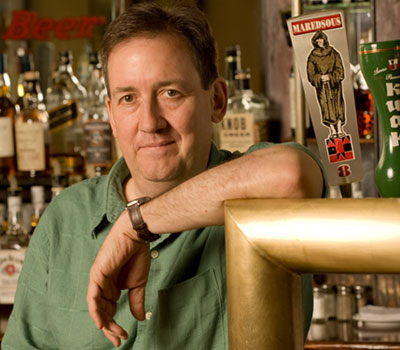In 2012, twenty years after he’d founded Hopleaf, Michael Roper decided that either he wasn’t going to bother with much of a wine program at all or he was going to make it one of the most competitive, compelling and attractive in the city. The result is the best wine list for a beer joint in the country, with no wine over $50, and some very good wines at that. “We just figured that beer is what is going to draw people here and wine will never be our profit center,” Roper says. “But we may as well make it worthwhile to those who love wine, and I love wine.”


The prices…
I knew that no one who walked in here was going to spend $100 on wine, so we changed the approach: There’s one price for white wines—$40, and one price for red wines—$50. That’s it. In order to sell wine here we’re not going to make margins that are typical. But we’re going to make people happy.
I also wanted to fight against the common action of people in restaurants to always order second cheapest wine on list. No one likes to admit it when they’re looking at the list, but when they’re shopping, their fingers are moving down the right column. We took right column away. Also, the list is alphabetical, Old World, New World, doesn’t matter. If they’re going to look at it at all, they’re going to have to look at the whole list.
You also sell wine on draft.
Yes, we sell a lot of wine on tap. We’re selling 2014 Kracher grüner veltliner out of a key keg, bag in box. Who would ever think we could do such a thing? Or a great provencal rose, Côte du Rhône, all of them on draft, with no oxidation, instead of old days when we had actual glass pours. It’s so much easier this way. The system keeps the temperature control, it’s never exposed to oxygen, it’s perfect. And we can sell people a glass for $10, a quartino (500ml) for $18. We go through eight to twelve 20-liter kegs a week.
How does your clientele react to the wine program?
Our audience is more mature than most beer pubs and tap rooms, where the average age tends to be 21 to 28—younger beer geeks who think someone who orders wine should be shot. Our crowd is more 30 to 50; I like to call those people ‘omnibeverous.’ They are interested in lots of things—they will drink sparkling mead, wine, cider, maybe even cocktails, definitely a glass of rye. Wine among those customers is a growing segment. Plus, as your twenty-something wine geek turns thirty, that appreciation they have for beverages is about flavor, and that means they’re very likely to discover wine. They’re not going to stop drinking beer, but they will choose wine more often. We want to be there to introduce them to things that go beyond cabernet, merlot. It’s important to have Gevrey-Chambertin, interesting Spanish wines. We sell a lot of Châteauneuf-du-Pape, blanc and rouge; we have red and white Priorat. We sell more Grimaldi Barolo than probably anyone around here.
Patrick J. Comiskey covers US wines for Wine & Spirits magazine, focusing on the Pacific Northwest, California’s Central Coast and New York’s Finger Lakes.
















